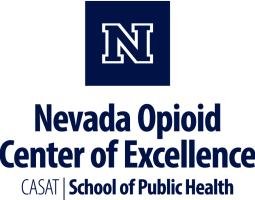
Continuing Medical Education: Screening, Brief Intervention, and Referral to Treatment (SBIRT) in Medical Settings
The purpose of this series is to provide healthcare professionals the opportunity to learn how to care for themselves and their patients during challenging times. Each session is intended to address Nevada specific CME requirements related to ethics, SBIRT, and suicide prevention.

Preparing Your Health Center for SBIRT Implementation
Coming Soon.
Screening, Brief Intervention, and Referral to Treatment (SBIRT) is designed to provide universal screening, prevention, and early intervention and treatment within health care settings and community-based organizations for people who have risky or hazardous alcohol and/or drug use.

SBIRT for Health Professionals Project ECHO Series
Dates: Coming soon.
This series for Health Professionals will provide community health professionals with the training and support they need to manage substance use issues within health settings specializing in treating pregnant and non-pregnant persons of reproductive populations using an SBIRT model.

Screening and Brief Intervention for Alcohol and Opioid/Substance Use: SELF-PACED ONLINE
Self Paced Online Course
The Screening and Brief Intervention (SBI) for Alcohol and Opioid/Substance Use Professionals course is designed as a comprehensive evidence-based approach for facilitating conversations between patients/clients and healthcare providers in medical and community health settings regarding alcohol and opioid/substance use. The course includes a didactic component on the topics of: Substance use among adults, adolescents, and pregnant persons; Substance use and mental health; categories of substance use; SBI cost effectiveness, Screening tools; Brief Intervention; Core motivational interviewing skills; and Referral to treatment. In addition, demonstrations on how to use SBI with patients/clients for both alcohol and opioid/substance use are provided.

A Brief Overview of Motivational Interviewing: SELF-PACED ONLINE
Self Paced Online Course
After attending this brief overview of Motivational Interviewing, participants will be able to: Define Motivational Interviewing, Gain knowledge about Motivational Interviewing principles and counseling strategies, Define the Stages of Change, and Learn interaction techniques and MI traps to avoid.

Adolescent SBIRT
As key members of an adolescent’s healthcare team, practitioners in the fields of nursing, social work and interprofessional care have an obligation to help prevent and reduce substance use with their young patients.
